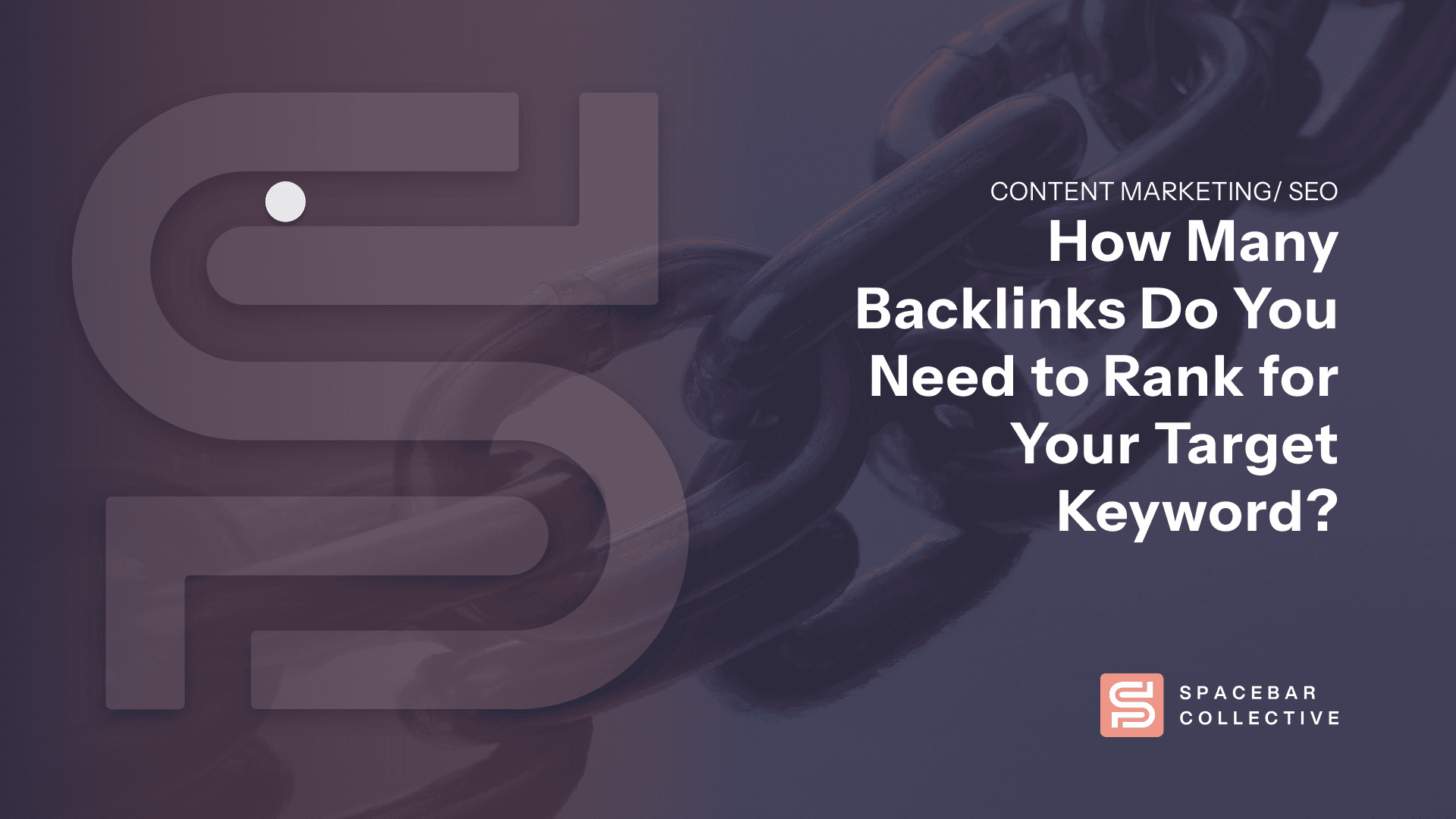SEO for Technical and Non-Marketing Founders
By the time you’re done reading this, I hope you’ll be able to walk away with practical action items you can implement with your team to set yourself up for SEO success.
The way I see it, there are 2 scenarios where SEO makes the most sense as an acquisition channel for SaaS founders:
- Launch: Designing your website with SEO in mind
- Growth: You’re able to set aside $1,000+ per month for SEO
Why SEO is Important for SaaS Companies
Passive Lead Generation
Rather than chasing signups through PPC or social media, SEO brings signups straight to your door. By producing content for every stage of the customer acquisition funnel, your SaaS will be positioned to bring in organic signups.
Even if SEO isn’t going to be your primary acquisition channel, ranking highly on Google will allow you to earn new leads every month without active efforts. Passive lead generation is tough to attain, but worth it once you get the flywheel going.
Stronger Brand Positioning
Ranking highly on Google means your company is in the same ballpark as even your largest competitors—no matter how long they’ve been established and no matter how impressive their client base is.
Consider the impact of ranking next to tech giants and how it shapes your growth.
If the first page of Google looks something like this, you’re sitting in excellent shape:
- HubSpot
- ActiveCampaign
- Your SaaS Here
One great thing about SEO that I love is that it’s a channel where you can win without investing obscene resources (other than your time investment). Depending on how competitive your software category is, this may take anywhere from 6 months to 2 years to see desired results.
However, if you work with an SEO with a track record in SaaS, this time can be cut down significantly. For example, here at Spacebar Collective, we’ve built up relationships with software and marketing blogs to make backlink building a much shorter, more affordable process. Think of it like a friend letting you cut in line; we’re here to help.
Brand Reputation
SEO principles work side by side with building a good reputation.
In 2019, Google made a core algorithm update that factors in what they call E-AT. No, it has nothing to do with food, although that was the first thing that came to my mind, too.
E-A-T stands for Expertise, Authoritativeness, and Trustworthiness. It’s a set of guidelines that Google uses to determine how high to rank a piece of content in its search results. To have strong E-A-T, your content must be written by an expert on the topic, be authoritative (backed up by other sources), and be trustworthy (free of errors and biases).
Google later added to the acronym, making E-E-A-T, with the additional E standing for Experience. Content should reflect first-hand experiences or at the very least, cite sources that offer unique perspective.
The most straightforward way to improve EEAT is to make sure your website has the most basic pages that every reputable company has:
Pages Every SaaS Should Have (for SEO)
- About
- Pricing
- Integrations
- Case Studies
- [competitor] vs. [your SaaS]
- [competitor] alternatives
- [category] software
- 404 → Content Hub + Contact
I’ll get into the above pages more in-depth with best practices you can leverage to earn signups in an upcoming article, so make sure to follow me on Twitter.
How to Do SEO for Your SaaS
On-Page SEO
When it comes to SEO, there are a lot of different moving parts to consider. But one thing that remains constant is the importance of following on-page best practices.
On-page SEO is the process of optimizing individual web pages in order to rank higher and earn more relevant traffic in search engines. It’s a crucial part of any good SEO strategy.
And while the algorithms used by search engines are constantly changing and evolving, there are still some tried-and-true on-page optimization techniques that can help your content rank higher and perform better.
Here are 5 on-page SEO principles to keep in mind when publishing new content:
1. Use keyword-rich titles and meta descriptions.
When it comes to on-page SEO, one of the first things you need to do is make sure your titles and meta descriptions are keyword-rich.
Your title should accurately reflect the content of your article and include the target keyword. And your meta description should be a short summary of your article that also includes the target keyword.
2. Optimise your images.
In addition to optimizing your text, you should also optimize your images for SEO. This means including relevant keywords in your image file names and alt text.
3. Use internal links.
Internal linking is an important part of on-page SEO. By linking to other related articles or pages on your website, you can help search engines better understand the context of your content and improve its relevance.
4. Use external links.
In addition to internal links, you should also include contextually relevant external links in your content. External links help show search engines that your content is authoritative and trustworthy. Just be sure you aren’t linking out to content that’s in direct competition with your page’s focus keyword!
5. Format your content for easy readability.
Make sure your content is easy to read and free of any errors or typos. Use short paragraphs, subheadings, and bulleted lists to break up your text and make it more scannable. You can use tools like Hemingway and Grammarly to improve readability.
By following these on-page SEO tips, you can help ensure that your content is optimised for maximum visibility and effectiveness. So don’t forget to keep them in mind the next time you hit “publish.”
Off-Page SEO
Citation Building
Citation building is the process of creating profiles and listings for your company in business directories and review sites.
While this isn’t actually a very effective tactic in modern SEO, it does have immense benefits in the SaaS world specifically. In fact, I would say SaaS is the big exception where citation building is an essential, must-do, can’t go without tactic.
While the backlinks from business directories aren’t nearly as strong as they used to be, the directories that you can list your SaaS definitely hold their weight. Software review sites in general, have very high authority and trustworthiness in Google’s eyes and in potential users’ eyes. They are also often cited by LLMs as trusted sources.
Some of these platforms allow you to have links specifically to your pricing page and product demo, which can be quite valuable for bringing in new users. I’ve included links directly to their vendor signup pages below to make things easier for you.
To make things easier, we’ve compiled a list of software review site signup links you should definitely consider:
- Capterra
- SaaSGenius
- HubSpot App Marketplace
- SalesForce App Exchange
- AlternativeTo
- TrustRadius
- CrozDesk
In terms of organization and keeping your workflow tidy, I would recommend starting with Capterra and recording all the information they request in a Google Doc or Airtable for future use on other platforms. It’s also important to keep a spreadsheet of which platforms you sign up for and which ones list your pricing. When you inevitably increase your pricing or change up your pricing tiers, you’ll be able to tackle updating all your listings in one fell swoop.
Creating citations can be a time-consuming process, but it’s well worth the effort. Not only will it help improve your SEO, but it will also help drive qualified traffic to your website.
Backlink Building
There’s a lot of debate in the SEO community about the value of backlinks. Some believe that they’re essential for ranking well in search engines, while others believe that they’re relatively unimportant.
Personally, I believe that backlinks are still incredibly valuable, but that their importance has slightly diminished in recent years. As time passes, Google search engines place more and more emphasis on factors such as content quality and user experience. Maybe one day we’ll see ranking algorithms that don’t take backlinks seriously, but we just aren’t there yet.
Backlinks matter.
That said, backlinks can still be valuable for SEO purposes. They can help to improve your website’s visibility and organic traffic levels. Additionally, high-quality backlinks can also help to increase your website’s authority and trustworthiness.
If you’re looking to build backlinks to your website, there are a few things you should keep in mind. First, it’s important to focus on quality over quantity. It’s better to have a few high-quality backlinks than a large number of low-quality ones.
Second, try to get links from websites that are relevant to your niche or industry. Getting links from irrelevant websites won’t do you much good.
And finally, avoid using techniques that could get you penalized by Google or other search engines. This includes things like link buying, link farms, and other black hat SEO tactics.
Technical SEO
Technical SEO includes any activity that makes sure your website is easy to use and understand, from both Google’s scrapers’ eyes and from a UX perspective. Page load speed is one of the primary focuses of technical SEO, but it might also involve other things that may impact Google’s ability to ‘read’ and index your website.
Technical SEO includes activities like:
- Optimizing your website’s code so it can be read more easily by Google
- Improving your website’s speed and performance
- Making sure your site is accessible to both Google and humans
- Setting up structured data so Google can better understand your content
- Creating an XML sitemap and submitting it to Google Search Console
Add Schema Markup
Schema markup is code that you can add to your website to help search engines understand your content better. It’s a way of giving structure to your data so that search engines can interpret it more accurately.
Adding schema markup to your website can be beneficial for two main reasons:
- It can help improve your website’s click-through rate (CTR) by making your listings more rich and informative in the search results.
- It can help search engines better understand the content on your website, which can lead to improved rankings over time.
If you’re running a SaaS business, then schema markup can be particularly beneficial. That’s because SaaS businesses often have complex pricing structures and subscription plans. This type of information can be difficult for search engines to understand without schema markup.
Adding schema markup to your website is relatively simple. You can use tools like Schemantra or Google’s own Structured Data Markup Helper to generate the code for you. Once you have the code, you just need to add it to your website.
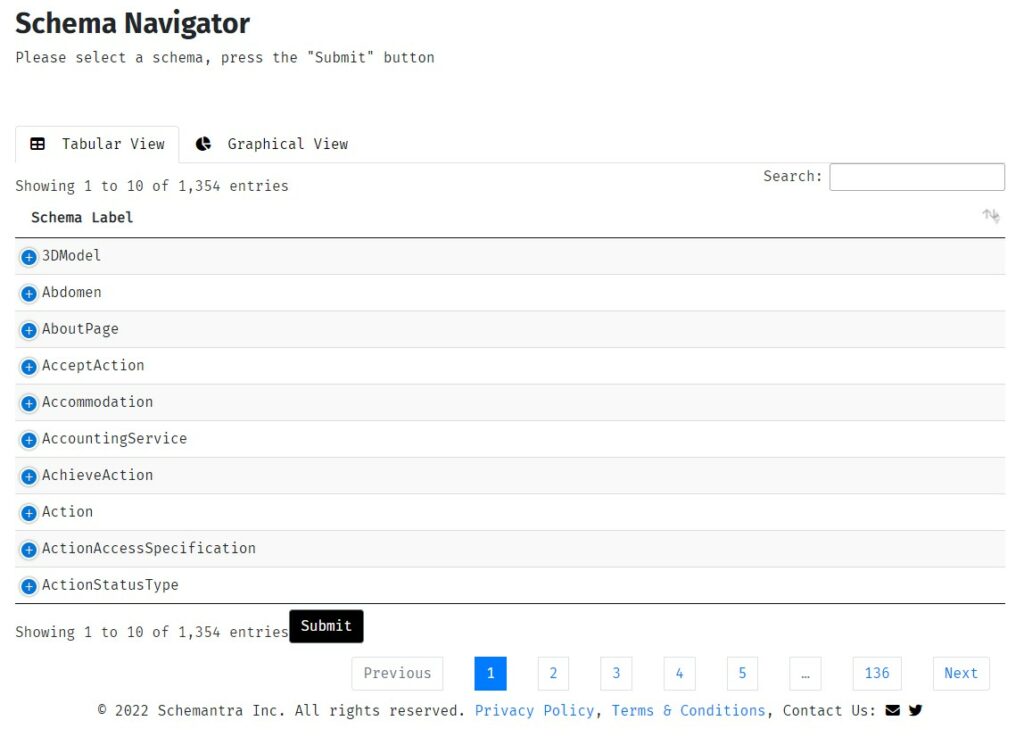
Optimise for Speed
The faster your pages load, the better equipped your website is for SEO. Page speed is a ranking factor for both desktop and mobile searches, so it’s important to make sure your website is as fast as possible.
Using tools like GTmetrix or WebPageTest.org is the easiest method of pinpointing the improvements you can make for speed optimization.

If you want to be more efficient, you could refer to EXPERTE.com’s Bulk Page Speed Test, which makes it possible to automatically determine Core Web Vitals and speed for your entire website. The great thing about it, besides its cost (free – no signup required) is that it automatically crawls up to 500 URLs or 60 seconds worth of subpages, whichever comes first. This means you can check your entire website without having to input each URL one by one. It also has a URL list feature, so you manually input which URLs you’d like it to crawl.
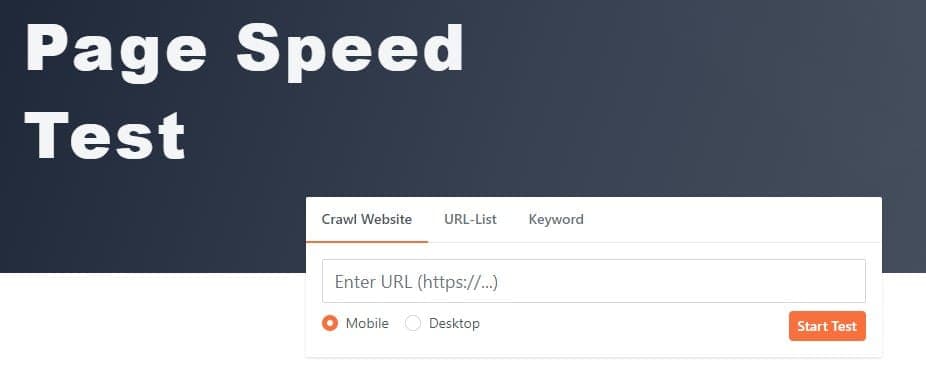
There are a few key methods to improve your website’s page speed. One is to optimise your images. Make sure your images are the correct size and format, and that they’re compressed so they don’t take up too much space.
Another way to improve your website’s page speed is to minify your HTML, CSS, and JavaScript files. This means removing all unnecessary code from your files, which will make them smaller and faster to load.
You can also use a content delivery network (CDN) like CloudFlare to improve your website’s page speed. A CDN is a group of servers that deliver content to users based on their geographic location. Using a CDN will help ensure that your website’s content is delivered quickly, no matter where in the world someone is trying to access it.
Finally, you can use a caching plugin like W3 Total Cache (WordPress) to improve your website’s page speed. Caching plugins store a copy of your website’s pages and files on a user’s computer, so they don’t have to be downloaded each time someone visits your site. This can help reduce the amount of time it takes for your pages to load.
Tips for Succeeding in SaaS SEO
Keyword Research and Content Planning
Keyword research is the process of finding and analyzing the words and phrases that people use to search for information on Google.
Keyword research is an important part of SEO because it allows you to find and target the right keywords for your website. By understanding what people are searching for, you can optimize your site to attract more visitors and improve your chances of ranking higher in search engine results pages (SERPs).
There are a number of different tools you can use to do keyword research, but these are the industry staples:
If you’re scared off by their monthly price tags, that’s a sign you aren’t ready to tackle SEO as a growth channel. Sorry, but that’s the truth.
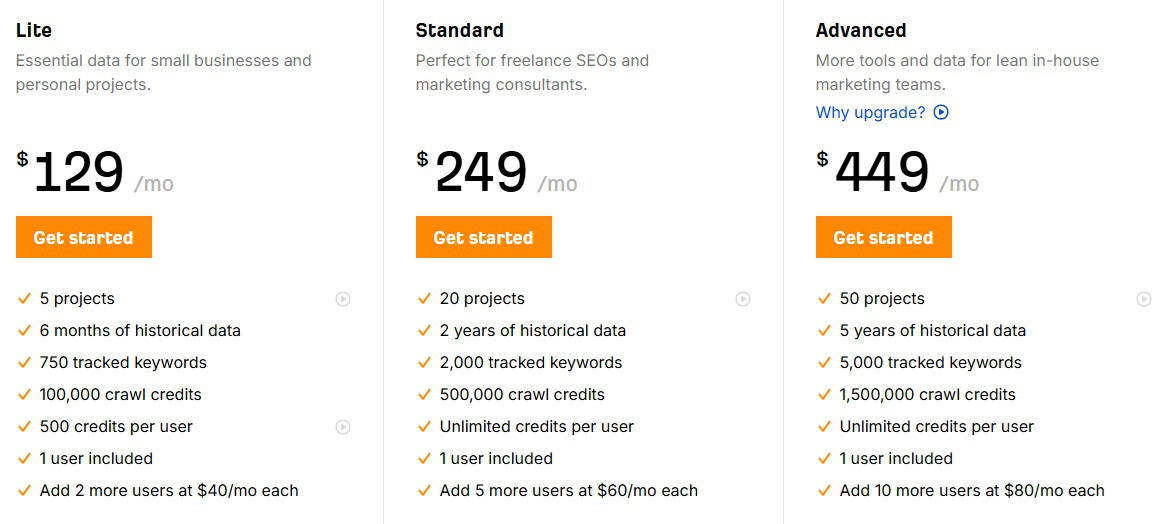
Build a Library of Linkable Content
Think of building a base library of content as a method of ‘priming’ your website for link-building efforts. Most website admins aren’t willing to link to homepages of new companies, but they’re definitely keen on linking to valuable blog content their readers will find useful.
To make your content linkable, you need to give people a reason to link to it. This could be by providing useful information, or by offering something unique that people can’t find elsewhere. For example, if you’re a CRM, you could write an in-depth guide to how using a CRM increases sales or improves internal communications. Or if you have a Chrome extension, you could write content about why your customers love using it.
Follow On-Page SEO Principles in New Content
SEO is a fundamental part of online publishing, but it’s often overlooked.
When it comes to SEO, there are a lot of different moving parts. But one thing that remains constant is the importance of following on-page best practices.
You don’t want to have to go back and re-optimize your new content, right?
Content Velocity
Content velocity is the rate at which you’re creating new content.
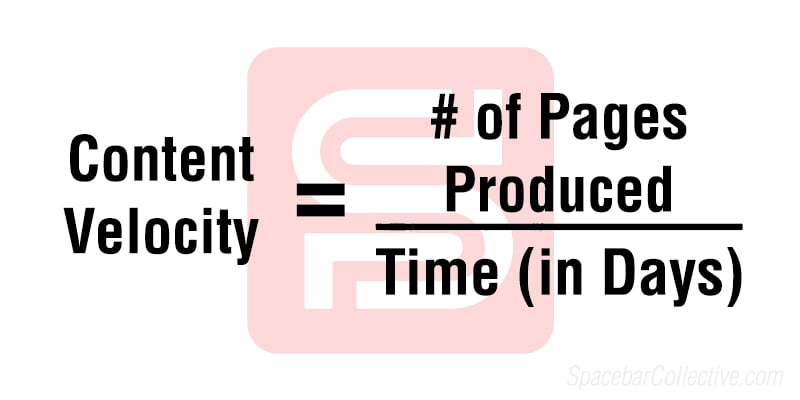
The more new content you create, the more keywords you’re able to capture search real estate for. You can only rank for keywords you produce content for, after all.
Of course, simply churning out new content isn’t enough. That content also needs to be high-quality and relevant to your target audience. But if you can strike the right balance between quantity and quality, you’ll be well on your way to driving more traffic and sales through your website.
So, how do you go about increasing your content velocity? Here are a few tips:
- Plan ahead. The best way to ensure that you’re creating new content regularly is to plan ahead. By mapping out a content calendar based on your keyword research, you’ll always know what needs to be created and in what order it should be produced. This will help you stay on track and avoid last-minute scrambling to get something new up on your blog.
- Batch your content creation. If writing isn’t your thing, consider batching your content creation. This means setting aside a specific day (or even just an afternoon) each week to create all of your new content. This will help you be more efficient and productive and ensure that you always have fresh content to publish.
- Automate and recycle where possible. There are certain aspects of content creation that can be automated, such as posting to social media or sending out email newsletters. Free up some time in your schedule by taking advantage of these automation tools. Thinking vice versa, if there are other pieces of content you’re already producing, like podcasts or YouTube videos, you can think about how to recycle them for your blog.
- Delegate and outsource. If you’re finding it difficult to keep up with the demands of creating new content, then consider delegating some of the work to others. You can hire a freelance writer or virtual assistant to help you with the heavy lifting. Or, if you have the budget, you can outsource the entire process to a marketing agency.
Link Velocity
Link velocity is the speed at which a website acquires new links.
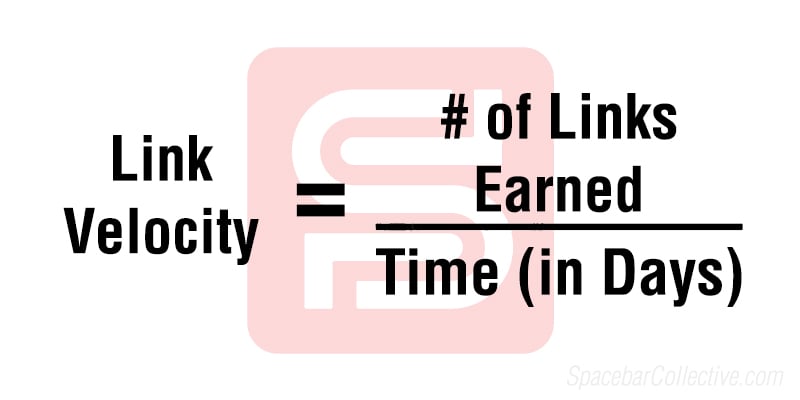
A high link velocity indicates that a website is growing quickly and gaining authority. In contrast, a low link velocity indicates that a website is not growing as quickly or gaining as much authority.
Most SEOs believe that link velocity is a major ranking factor, and many studies have shown that websites with high link velocities tend to rank higher than those with low link velocities.
In general, it is best to focus on quality over quantity when it comes to links. A few high-quality links are almost always worth more than many low-quality links.
If you’re putting resources into scaling up your backlink-building efforts, it’s also important to consider the publishing velocity of others in your niche. If you’re building links at a lightspeed rate while competitors are at a snail’s pace, Google might think your website is gaming the system and penalize you. The main strategy to get around this is to slowly build up to your competition’s link velocity and to continue scaling at the same rate past them.
Earning Page 1 Rankings
As your SaaS grows, so too can your SEO efforts. The sky’s the limit when it comes to building organic search traffic, making it a highly scalable growth channel.
Unlike paid advertising, which can be turned off anytime, SEO traffic is long-term and sustainable. Once you rank for a certain keyword, you’ll continue to get traffic from it as long as you maintain your ranking.
SEO is such a powerful growth channel for SaaS companies, and if this article didn’t convince you, I don’t know what will.
15% of all Google searches have never been searched for before
It’s NEVER too late to start SEO
Your most profitable keywords might not even exist yet
— Chris Tweten (@ctwtn) April 10, 2022


